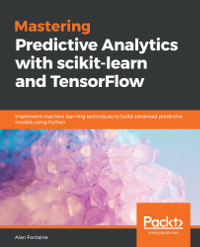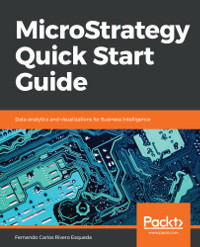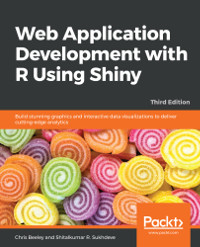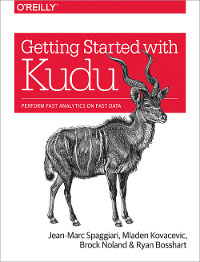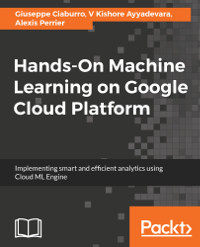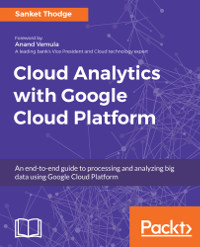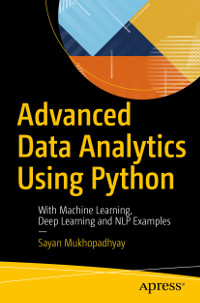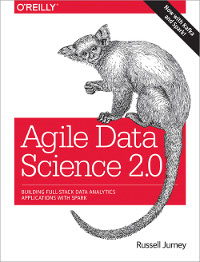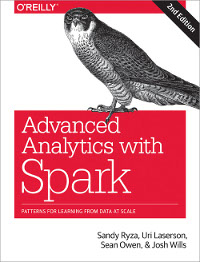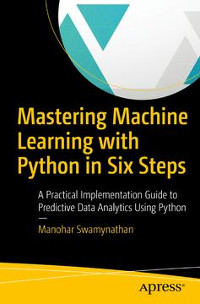Analytics eBooks
Mastering Predictive Analytics with scikit-learn and TensorFlow
Python is a programming language that provides a wide range of features that can be used in the field of data science. Mastering Predictive Analytics with scikit-learn and TensorFlow covers various implementations of ensemble methods, how they are used with real-world datasets, and how they improve prediction accuracy in classification and regression problems. This book starts with ensemble methods and their features. You will see that scikit-learn provides tools for choosing hyperparameters for models. As you make your way through the book, you will cover the nitty-gritty of predictive analytics and explore its features and characteristics. You will also be introduced to artificial neural networks and TensorFlow, and how it is used to create neural networks. In the final chapter, you will explore factors such as computational power, along with improvement methods and software enhancements for efficient predictive analytics. By the end of this book, you will be well ...
Python is a programming language that provides a wide range of features that can be used in the field of data science. Mastering Predictive Analytics with scikit-learn and TensorFlow covers various implementations of ensemble methods, how they are used with real-world datasets, and how they improve prediction accuracy in classification and regression problems. This book starts with ensemble methods and their features. You will see that scikit-learn provides tools for choosing hyperparameters for models. As you make your way through the book, you will cover the nitty-gritty of predictive analytics and explore its features and characteristics. You will also be introduced to artificial neural networks and TensorFlow, and how it is used to create neural networks. In the final chapter, you will explore factors such as computational power, along with improvement methods and software enhancements for efficient predictive analytics. By the end of this book, you will be well ...
MicroStrategy Quick Start Guide
MicroStrategy is an enterprise business intelligence application. It turns data into reports for making and executing key organization decisions. This book shows you how to implement Business Intelligence (BI) with MicroStrategy. It takes you from setting up and configuring MicroStrategy to security and administration. The book starts by detailing the different components of the MicroStrategy platform, and the key concepts of Metadata and Project Source. You will then install and configure MicroStrategy and lay down the foundations for building MicroStrategy BI solutions. By learning about objects and different object types, you will develop a strong understanding of the MicroStrategy Schema and Public Objects. With these MicroStrategy objects, you will enhance and scale your BI and Analytics solutions. Finally, you will learn about the administration, security, and monitoring of your BI solution. ...
MicroStrategy is an enterprise business intelligence application. It turns data into reports for making and executing key organization decisions. This book shows you how to implement Business Intelligence (BI) with MicroStrategy. It takes you from setting up and configuring MicroStrategy to security and administration. The book starts by detailing the different components of the MicroStrategy platform, and the key concepts of Metadata and Project Source. You will then install and configure MicroStrategy and lay down the foundations for building MicroStrategy BI solutions. By learning about objects and different object types, you will develop a strong understanding of the MicroStrategy Schema and Public Objects. With these MicroStrategy objects, you will enhance and scale your BI and Analytics solutions. Finally, you will learn about the administration, security, and monitoring of your BI solution. ...
Web Application Development with R Using Shiny, 3rd Edition
Web Application Development with R Using Shiny helps you become familiar with the complete R Shiny package. The book starts with a quick overview of R and its fundamentals, followed by an exploration of the fundamentals of Shiny and some of the things that it can help you do. You'll learn about the wide range of widgets and functions within Shiny and how they fit together to make an attractive and easy to use application. Once you have understood the basics, you'll move on to studying more advanced UI features, including how to style apps in detail using the Bootstrap framework or and Shiny's inbuilt layout functions. You'll learn about enhancing Shiny with JavaScript, ranging from adding simple interactivity with JavaScript right through to using JavaScript to enhance the reactivity between your app and the UI. You'll learn more advanced Shiny features of Shiny, such as uploading and downloading data and reports, as well as how to interact with tables and link reactive output ...
Web Application Development with R Using Shiny helps you become familiar with the complete R Shiny package. The book starts with a quick overview of R and its fundamentals, followed by an exploration of the fundamentals of Shiny and some of the things that it can help you do. You'll learn about the wide range of widgets and functions within Shiny and how they fit together to make an attractive and easy to use application. Once you have understood the basics, you'll move on to studying more advanced UI features, including how to style apps in detail using the Bootstrap framework or and Shiny's inbuilt layout functions. You'll learn about enhancing Shiny with JavaScript, ranging from adding simple interactivity with JavaScript right through to using JavaScript to enhance the reactivity between your app and the UI. You'll learn more advanced Shiny features of Shiny, such as uploading and downloading data and reports, as well as how to interact with tables and link reactive output ...
Getting Started with Kudu
Fast data ingestion, serving, and analytics in the Hadoop ecosystem have forced developers and architects to choose solutions using the least common denominator - either fast analytics at the cost of slow data ingestion or fast data ingestion at the cost of slow analytics. There is an answer to this problem. With the Apache Kudu column-oriented data store, you can easily perform fast analytics on fast data. This practical guide shows you how. Begun as an internal project at Cloudera, Kudu is an open source solution compatible with many data processing frameworks in the Hadoop environment. In this book, current and former solutions professionals from Cloudera provide use cases, examples, best practices, and sample code to help you get up to speed with Kudu. Explore Kudu's high-level design, including how it spreads data across servers; Fully administer a Kudu cluster, enable security, and add or remove nodes; Learn Kudu's client-side APIs, including how to int ...
Fast data ingestion, serving, and analytics in the Hadoop ecosystem have forced developers and architects to choose solutions using the least common denominator - either fast analytics at the cost of slow data ingestion or fast data ingestion at the cost of slow analytics. There is an answer to this problem. With the Apache Kudu column-oriented data store, you can easily perform fast analytics on fast data. This practical guide shows you how. Begun as an internal project at Cloudera, Kudu is an open source solution compatible with many data processing frameworks in the Hadoop environment. In this book, current and former solutions professionals from Cloudera provide use cases, examples, best practices, and sample code to help you get up to speed with Kudu. Explore Kudu's high-level design, including how it spreads data across servers; Fully administer a Kudu cluster, enable security, and add or remove nodes; Learn Kudu's client-side APIs, including how to int ...
Applied Analytics through Case Studies Using SAS and R
Examine business problems and use a practical analytical approach to solve them by implementing predictive models and machine learning techniques using SAS and the R analytical language. This book is ideal for those who are well-versed in writing code and have a basic understanding of statistics, but have limited experience in implementing predictive models and machine learning techniques for analyzing real world data. The most challenging part of solving industrial business problems is the practical and hands-on knowledge of building and deploying advanced predictive models and machine learning algorithms. Applied Analytics through Case Studies Using SAS and R is your answer to solving these business problems by sharpening your analytical skills. Understand analytics and basic data concepts; Use an analytical approach to solve Industrial business problems; Build predictive model with machine learning techniques; Create and apply analytical strategies. ...
Examine business problems and use a practical analytical approach to solve them by implementing predictive models and machine learning techniques using SAS and the R analytical language. This book is ideal for those who are well-versed in writing code and have a basic understanding of statistics, but have limited experience in implementing predictive models and machine learning techniques for analyzing real world data. The most challenging part of solving industrial business problems is the practical and hands-on knowledge of building and deploying advanced predictive models and machine learning algorithms. Applied Analytics through Case Studies Using SAS and R is your answer to solving these business problems by sharpening your analytical skills. Understand analytics and basic data concepts; Use an analytical approach to solve Industrial business problems; Build predictive model with machine learning techniques; Create and apply analytical strategies. ...
Hands-On Machine Learning on Google Cloud Platform
Google Cloud Machine Learning Engine combines the services of Google Cloud Platform with the power and flexibility of TensorFlow. With this book, you will not only learn to build and train different complexities of machine learning models at scale but also host them in the cloud to make predictions. This book is focused on making the most of the Google Machine Learning Platform for large datasets and complex problems. You will learn from scratch how to create powerful machine learning based applications for a wide variety of problems by leveraging different data services from the Google Cloud Platform. Applications include NLP, Speech to text, Reinforcement learning, Time series, recommender systems, image classification, video content inference and many other. We will implement a wide variety of deep learning use cases and also make extensive use of data related services comprising the Google Cloud Platform ecosystem such as Firebase, Storage APIs, Datalab and so forth. This will ...
Google Cloud Machine Learning Engine combines the services of Google Cloud Platform with the power and flexibility of TensorFlow. With this book, you will not only learn to build and train different complexities of machine learning models at scale but also host them in the cloud to make predictions. This book is focused on making the most of the Google Machine Learning Platform for large datasets and complex problems. You will learn from scratch how to create powerful machine learning based applications for a wide variety of problems by leveraging different data services from the Google Cloud Platform. Applications include NLP, Speech to text, Reinforcement learning, Time series, recommender systems, image classification, video content inference and many other. We will implement a wide variety of deep learning use cases and also make extensive use of data related services comprising the Google Cloud Platform ecosystem such as Firebase, Storage APIs, Datalab and so forth. This will ...
Cloud Analytics with Google Cloud Platform
With the ongoing data explosion, more and more organizations all over the world are slowly migrating their infrastructure to the cloud. These cloud platforms also provide their distinct analytics services to help you get faster insights from your data. This book will give you an introduction to the concept of analytics on the cloud, and the different cloud services popularly used for processing and analyzing data. If you're planning to adopt the cloud analytics model for your business, this book will help you understand the design and business considerations to be kept in mind, and choose the best tools and alternatives for analytics based on your requirements. The chapters in this book will take you through the 70+ services available in Google Cloud Platform and their implementation for practical purposes. From ingestion to processing your data, this book contains best practices on building an end-to-end analytics pipeline on the cloud by leveragi ...
With the ongoing data explosion, more and more organizations all over the world are slowly migrating their infrastructure to the cloud. These cloud platforms also provide their distinct analytics services to help you get faster insights from your data. This book will give you an introduction to the concept of analytics on the cloud, and the different cloud services popularly used for processing and analyzing data. If you're planning to adopt the cloud analytics model for your business, this book will help you understand the design and business considerations to be kept in mind, and choose the best tools and alternatives for analytics based on your requirements. The chapters in this book will take you through the 70+ services available in Google Cloud Platform and their implementation for practical purposes. From ingestion to processing your data, this book contains best practices on building an end-to-end analytics pipeline on the cloud by leveragi ...
Advanced Data Analytics Using Python
Gain a broad foundation of advanced data analytics concepts and discover the recent revolution in databases such as Neo4j, Elasticsearch, and MongoDB. This book discusses how to implement ETL techniques including topical crawling, which is applied in domains such as high-frequency algorithmic trading and goal-oriented dialog systems. You'll also see examples of machine learning concepts such as semi-supervised learning, deep learning, and NLP. Advanced Data Analytics Using Python also covers important traditional data analysis techniques such as time series and principal component analysis. After reading this book you will have experience of every technical aspect of an analytics project. You'll get to know the concepts using Python code, giving you samples to use in your own projects. Work with data analysis techniques such as classification, clustering, regression, and forecasting; Handle structured and unstructured data, ETL techniques, and different kind ...
Gain a broad foundation of advanced data analytics concepts and discover the recent revolution in databases such as Neo4j, Elasticsearch, and MongoDB. This book discusses how to implement ETL techniques including topical crawling, which is applied in domains such as high-frequency algorithmic trading and goal-oriented dialog systems. You'll also see examples of machine learning concepts such as semi-supervised learning, deep learning, and NLP. Advanced Data Analytics Using Python also covers important traditional data analysis techniques such as time series and principal component analysis. After reading this book you will have experience of every technical aspect of an analytics project. You'll get to know the concepts using Python code, giving you samples to use in your own projects. Work with data analysis techniques such as classification, clustering, regression, and forecasting; Handle structured and unstructured data, ETL techniques, and different kind ...
Agile Data Science 2.0
Data science teams looking to turn research into useful analytics applications require not only the right tools, but also the right approach if they're to succeed. With the revised second edition of this hands-on guide, up-and-coming data scientists will learn how to use the Agile Data Science development methodology to build data applications with Python, Apache Spark, Kafka, and other tools. Author Russell Jurney demonstrates how to compose a data platform for building, deploying, and refining analytics applications with Apache Kafka, MongoDB, ElasticSearch, d3.js, scikit-learn, and Apache Airflow. You'll learn an iterative approach that lets you quickly change the kind of analysis you're doing, depending on what the data is telling you. Publish data science work as a web application, and affect meaningful change in your organization. Build value from your data in a series of agile sprints, using the data-value pyramid; Extract features for statistical models from ...
Data science teams looking to turn research into useful analytics applications require not only the right tools, but also the right approach if they're to succeed. With the revised second edition of this hands-on guide, up-and-coming data scientists will learn how to use the Agile Data Science development methodology to build data applications with Python, Apache Spark, Kafka, and other tools. Author Russell Jurney demonstrates how to compose a data platform for building, deploying, and refining analytics applications with Apache Kafka, MongoDB, ElasticSearch, d3.js, scikit-learn, and Apache Airflow. You'll learn an iterative approach that lets you quickly change the kind of analysis you're doing, depending on what the data is telling you. Publish data science work as a web application, and affect meaningful change in your organization. Build value from your data in a series of agile sprints, using the data-value pyramid; Extract features for statistical models from ...
Advanced Analytics with Spark, 2nd Edition
In the second edition of this practical book, four Cloudera data scientists present a set of self-contained patterns for performing large-scale data analysis with Spark. The authors bring Spark, statistical methods, and real-world data sets together to teach you how to approach analytics problems by example. Updated for Spark 2.1, this edition acts as an introduction to these techniques and other best practices in Spark programming. You'll start with an introduction to Spark and its ecosystem, and then dive into patterns that apply common techniques - including classification, clustering, collaborative filtering, and anomaly detection - to fields such as genomics, security, and finance. If you have an entry-level understanding of machine learning and statistics, and you program in Java, Python, or Scala, you'll find the book's patterns useful for working on your own data applications. Familiarize yourself with the Spark programming model; Become comfortable within the S ...
In the second edition of this practical book, four Cloudera data scientists present a set of self-contained patterns for performing large-scale data analysis with Spark. The authors bring Spark, statistical methods, and real-world data sets together to teach you how to approach analytics problems by example. Updated for Spark 2.1, this edition acts as an introduction to these techniques and other best practices in Spark programming. You'll start with an introduction to Spark and its ecosystem, and then dive into patterns that apply common techniques - including classification, clustering, collaborative filtering, and anomaly detection - to fields such as genomics, security, and finance. If you have an entry-level understanding of machine learning and statistics, and you program in Java, Python, or Scala, you'll find the book's patterns useful for working on your own data applications. Familiarize yourself with the Spark programming model; Become comfortable within the S ...
Mastering Machine Learning with Python in Six Steps
Master machine learning with Python in six steps and explore fundamental to advanced topics, all designed to make you a worthy practitioner. This book's approach is based on the "Six degrees of separation" theory, which states that everyone and everything is a maximum of six steps away. Mastering Machine Learning with Python in Six Steps presents each topic in two parts: theoretical concepts and practical implementation using suitable Python packages. You'll learn the fundamentals of Python programming language, machine learning history, evolution, and the system development frameworks. Key data mining / analysis concepts, such as feature dimension reduction, regression, time series forecasting and their efficient implementation in Scikit-learn are also covered. Finally, you'll explore advanced text mining techniques, neural networks and deep learning techniques, and their implementation. All the code presented in the book will be available in the form of iPython ...
Master machine learning with Python in six steps and explore fundamental to advanced topics, all designed to make you a worthy practitioner. This book's approach is based on the "Six degrees of separation" theory, which states that everyone and everything is a maximum of six steps away. Mastering Machine Learning with Python in Six Steps presents each topic in two parts: theoretical concepts and practical implementation using suitable Python packages. You'll learn the fundamentals of Python programming language, machine learning history, evolution, and the system development frameworks. Key data mining / analysis concepts, such as feature dimension reduction, regression, time series forecasting and their efficient implementation in Scikit-learn are also covered. Finally, you'll explore advanced text mining techniques, neural networks and deep learning techniques, and their implementation. All the code presented in the book will be available in the form of iPython ...
